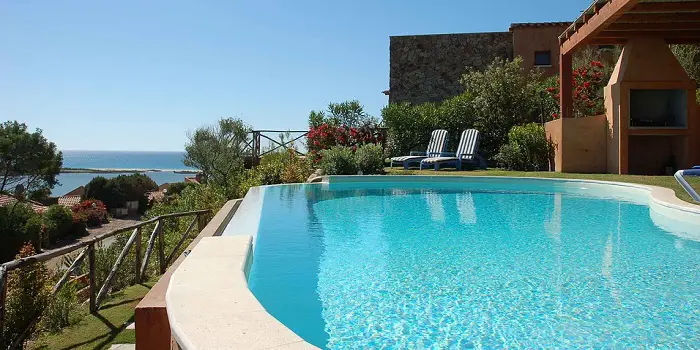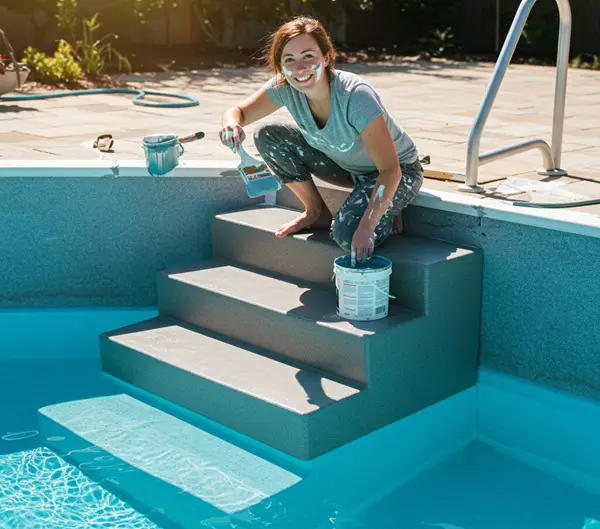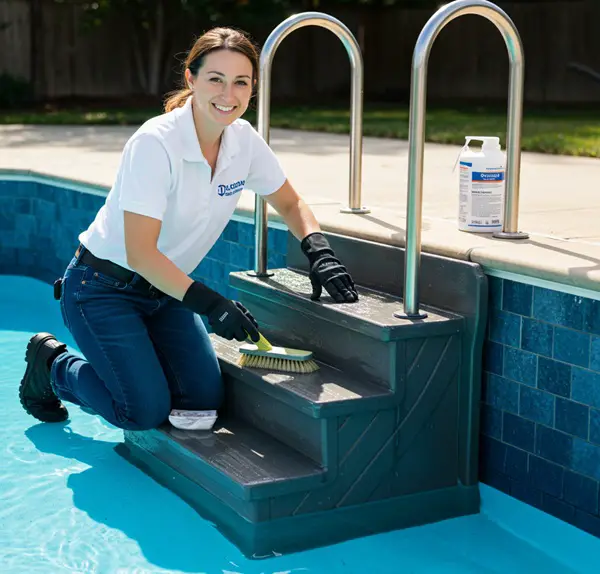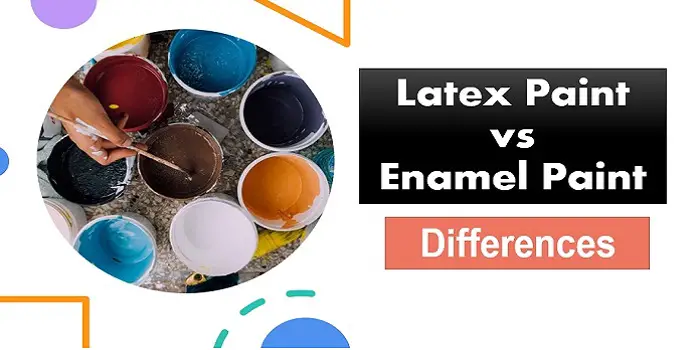
Fiberglass pools are getting popular worldwide due to the wide range of benefits they offer.
First of all, unlike plaster or concrete swimming pools, fiberglass pools are easy and fast to install. But the main benefit lies in its one running piece (which is usually of matting and resin material). Due to its characteristics and tough construction, there are rare chances of getting leaks in the fiberglass pool.
Much like a large shell, the installation will also include the pool steps. However, the finish of your fiberglass pool (and its steps) can fade with time due to the pool chemicals and weather conditions. And with years of use, you must repaint them with a type of paint that is specifically designed for fiberglass pool steps.
Epoxy pool paints are typically made of chemicals that will get hardened and waterproof when dried. Since these provide a strong protective layer much needed for fiberglass protection, it’s one of the most suitable materials to paint your fiberglass pool and its stairs.
What's Here in the Article:
Tips for Painting Pool Steps
Applying epoxy paint over the in-ground swimming pool ladder is simple.
- Start by cleaning your fiberglass pool steps.
- Repair any cracks (minor or major) using a fiberglass repair kit
- Then you just need to paint the steps and allow them to sit for a day or two
- Add another coat if needed, and then let it get fully cured for about seven days
Few paint manufacturers also make a spray paint variety that can be added to get additional texture to the fiberglass, vinyl, thermoplastic, or PVC. Putting this will help in reducing the slippery surfaces for ladders and provide extra safety.
But remember, based on your specific requirements, each pool material will require using different paint techniques. So, getting additional information on how to use paints such as epoxy on fiberglass pool steps is important if you want to get the right finish.
Especially if you already have multiple layers of coatings that offer different effects to your pool, you will need to put extra effort to mimic that same effect or pattern.
This also means, that simply adding one or two coats of epoxy paint will not be enough to match, and consulting a professional will be a good option.

Benefits of Epoxy Paint for Fiberglass Pool Stairs
One of the key advantages of epoxy coatings is their ability to provide a non-slip, skid-resistant surface, which is particularly important for fiberglass pool areas and its stairs.
Unlike many other smooth surface finishes, epoxy significantly reduces the risk of slipping. For added safety, it can be customized with slip-resistant features, including textured finishes or raised bumps.
Epoxy paint also offers a superior coating and resurfacing solution for fiberglass pool stairs, known for its exceptional durability and resistance to wear.
In marine applications, this type of coating is often referred to as marine-grade epoxy paint, epoxy adhesive paste, or epoxy finish, highlighting its strength and resilience in high-moisture environments.
Can you use latex paints on pool ladder?
Since most of the ladder material will be submerged under the water (or will remain wet most time), it’s essential that you choose the paint that is waterproof.
While there are a few enamels, acrylics, and latex paints designed for waterproofing, not all of them can be used on ladders and steps of the pool for restoration. These waterproof paints can work as a waterproof agent but cannot withstand water when submerged inside the water for long.
If you apply them, these paints will not adhere properly and can expand and contract with the air temperature. Plus, these paints will dissolve, corrode quickly, or peel away faster, thereby damaging the fiberglass beneath them.
Epoxy paints and gel coats are, therefore, the only best option for refinishing, painting, and waterproofing the fiberglass pool steps. Beyond these, it’s not a good idea to use any other substance to spray paint your fiberglass pool steps.
Do You Need a Gel Coat On Pool Steps After Painting?
A fiberglass pool is much like a huge bathtub that is sunk into the ground. It’s much better than an above-ground pool that does not add value to your home.
Epoxy paint on your plastic pool steps will basically provide an attractive color and can be applied if you want to change the color and appearance of your pool.
While these epoxy paints may fix small chips or cracks in your fiberglass pool, it does not provide all the protection from chemicals and other elements.
A clear gel coating, on the other hand, is much thicker and helps in preventing all the potential wear and leaks over time.
No matter what kind of paint you have used, it’s essential that you apply a gel coating over it to protect the fiberglass further from getting damaged soon. In fact, it’s a part of painting your fiberglass pool and its in-built ladder, so it should never be ignored.
Gel coat can be used on bare fiberglass or if your pool steps already have a layer of gel coat. But remember, if you need to repaint your fiberglass pool steps in the future again, you will need to strip off this gel coating. And after you have painted, it’s important to put up the gel coat again.

Tips for Fiberglass Pool Steps Maintenance After Refinishing
Congratulations — your fiberglass pool steps are looking fresh, glossy, and ready for their close-up.
But before you cannonball your way to glory, let’s talk about keeping those newly refinished steps in top shape. After all, nothing says “poolside regret” like peeling paint and algae slicks.
1. Be Kind, Don’t Scrub Blind. Those sparkly new steps don’t like to be roughed up. Toss the steel wool and harsh chemicals into the “nope” pile.
Use soft brushes or non-abrasive sponges with a gentle, pH-balanced cleaner. Treat your stairs like you would a new car — lovingly, and maybe with a little jazz music playing in the background.
2. Chemistry Class Still Matters. You don’t need a lab coat, but keeping your pool’s pH, alkalinity, and calcium hardness in check is key.
Imbalanced water is the silent killer of beautiful pool steps, leading to fading, chalking, or even blistering. Plus, your pool won’t smell like a science experiment gone wrong. Win-win.
3. Sun Protection Isn’t Just for Humans. If your pool steps are out in the sun strutting their stuff all day, consider applying a UV-resistant topcoat.
It’s basically sunscreen for fiberglass, minus the awkward spray bottle. This helps prevent fading and keeps your steps Instagram-ready all summer long.
4. Easy on the Acrobatics. Tempting as it is to reenact Olympic diving moments, avoid leaping directly onto the steps. They’re tough, not invincible.
Keep sharp objects, heavy pool toys, and wild dance moves away from them — unless you enjoy refinishing them again sooner than planned.
5. Rinse, Repeat, Relax. A quick rinse and light cleaning every now and then will go a long way.
Regular maintenance keeps your stairs safe, clean, and free from slippery surprises (because nobody wants to become the next viral pool fail video).
Related FAQs
How to fix faded fiberglass pool steps?
If you see your pool steps have some color change or if they do not appear as bright as they were before, prep and apply a high-quality marine-grade epoxy or gel coat designed for fiberglass. This not only revives the color but also adds a protective, glossy finish that resists future fading.
How long does epoxy paint last on fiberglass pool steps?
Epoxy paint on fiberglass pool steps can typically last 5 to 7 years with proper surface preparation and maintenance. Factors like water chemistry, sun exposure, and cleaning routines can affect its longevity. Pools with well-balanced water and minimal UV exposure tend to see longer-lasting results without being cracked or faded.
Can Epoxy Paint Be Used for Wooden or Metallic Pool Ladders?
Wood readily absorbs water and is more prone to rot than plastic, resin, or fiberglass. You will therefore need to waterproof the pool ladders well if it’s made from wood.
Applying a good epoxy primer and paint will prevent water from seeping into the wood and hence provide great protection. If you want you can apply epoxy primer on wood and then use any waterproof paint (like acrylic or latex waterproof paints). It will also get the job done.
Metal like stainless steel, which is often used for constructing swimming pools and ladders, is rather smooth and not porous. Although it is relatively harder to paint metallic pool ladders, there are a few painting options like marine-grade epoxy paint available for them as well.
If possible, pick solvent-free epoxy paint that offers the longest-lasting water-resistant finish without any chipping. You can apply this type of paint without any primer. After the application, allow at least 48 hours of drying time before using.
Final Thoughts
Fiberglass and resin pool steps can be challenging to paint. But it’s not impossible!
Epoxy paint is a two-part solution that not only refreshes the appearance of fiberglass stairs with a vibrant coat of color but also delivers a highly textured, ultra-rough gloss finish that enhances grip and safety. Its robust curing properties make it an ideal choice for environments requiring both performance and protection.
Since fiberglass material will only hold a specific paint type, when picking the best kind (like epoxy), it’s important that you understand how to apply the waterproof gel coating and keep it safe for long. After getting all done, allow enough time to dry the coating – before you fill it and enjoy the swimming pool with your family.
Share the post "What Paint to Use for Fiberglass Pool Steps?"

Douglas Becker (aka Painter Doug) has over twenty years of experience as a painter in Adkins, Texas. At present, he resides in Florida with his family.
From painting multi-storeyed houses, condos, and apartments to large commercial buildings and small offices, he had served various customers in areas not only in Adkins but also in Southwest Florida, Sarasota, Naples, and many more. To know more about him check here.




